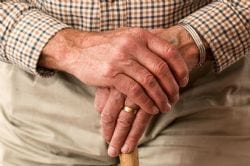Out in the cold: why are the oldest people the most excluded?
4 January 2017
People over the age of 85 are significantly more likely to suffer social exclusion than those in the 65 to 84-year-old bracket, according to new research. In a study of more than 10,000 people over the age of 65, social policy researchers found the so-called ‘oldest old’ – classed as those 85 and over – […]

People over the age of 85 are significantly more likely to suffer social exclusion than those in the 65 to 84-year-old bracket, according to new research.
In a study of more than 10,000 people over the age of 65, social policy researchers found the so-called ‘oldest old’ – classed as those 85 and over – have more trouble accessing services such as healthcare and food shops, with 16 per cent reporting ‘significant’ problems, compared with only four per cent of their younger counterparts. And women were found to be less likely to be able to access services than men.
The study, led by social policy researchers at the University of Lincoln with colleagues from Sheffield Hallam University, found that while only 17 per cent of respondents aged 65 to 84 said they do not go out socially, the number increased to nearly half of those in the oldest old bracket. Women in that age group were less likely to go out with friends, but surprisingly, rural respondents were more likely to go out than urban residents.
The older respondents were also less likely to go out socially even when cohabiting, suggesting that those in that age group are at greater risk of social exclusion regardless of whether they live alone, researchers said. Similarly, 19 per cent in the 85+ bracket reported it being ‘very difficult’ to visit family when they need to, compared with nine per cent of those in the younger age bracket.
The Office for National Statistics estimates there will be 3.2 million people aged 85 or over in the United Kingdom by 2039.
Dr Wesley Key, from the University of Lincoln’s School of Social & Political Sciences, said: “As people in western nations are living longer, it is now necessary to differentiate the ‘oldest old’ from what could be termed the ‘younger old’, or those aged 65 to 84. Our analysis found that those people are at greater risk of experiencing social exclusion compared with the 65-84 age group.
“We examined whether this risk was down to declining health among this age group, yet the analysis shows that those aged 85 and above are still at greater risk of social exclusion even if we take poor health into account.
“We know that a loss of social contact can damage physical and mental health, and furthermore, older people are more likely to need care from external providers if they live alone, something which is more likely among the oldest old. This places more pressure on statutory health and social care services.
“Measures must be taken to help them continue living in their own homes for as long as possible, whilst maintaining adequate social relations and being able to access services. As first steps, awareness and availability of technology such as Skype, telecare and online banking/shopping should be improved.”
Researchers said that third-sector provision such as Telephone Befriending Services and Dial-a-Ride community transport schemes have attempted to alleviate loneliness and isolation, but geographical variations can place it beyond the reach of some people. It also warned that voluntary organisations could not be responsible for ensuring the UK’s ageing society does not exclude older members of the population.
Dr Key added: “The government has a responsibility to ensure that the most vulnerable citizens are able to participate fully in social life within, and beyond, their home neighbourhoods. Even if the moral argument is not deemed sufficiently powerful, as life expectancy increases and the age profile of western nations pushes upward, the needs of future cohorts of the oldest old will become impossible to ignore.”
Dr Martin Culliney, research fellow at Sheffield Hallam University’s Sheffield Institute of Education, said: “The growing number of people aged 85 and over is one of the key demographic trends of the twenty-first century so far.
“Our analysis shows that this group are at greater risk of experiencing social exclusion than individuals aged between sixty-five and eighty-four. This applies even when someone’s health, and whether they live alone, are taken into account.
“Rising life expectancy presents opportunities but it also poses significant challenges. It is difficult to enjoy a happy and healthy old age if you have no contact with other people and are unable to access services. The changing age profile of Britain has implications for everyone.”
The findings have been published in the journal Social Policy and Society.
